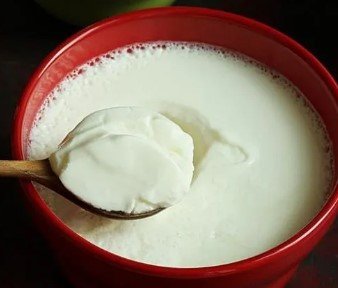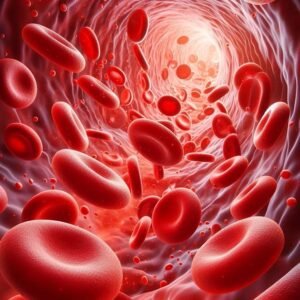
Nutritional Content of Curd
- Calories:
- A typical serving (1 cup or about 245 grams) of plain, low-fat curd has approximately 150 calories.
- Protein:
- About 8-12 grams of protein per cup, depending on the fat content. This protein aids in muscle repair and growth.
- Fat:
- Whole milk curd contains about 8 grams of fat, while low-fat and non-fat versions have significantly less (around 2-4 grams or less than 1 gram, respectively).
- Carbohydrates:
- Approximately 12 grams per cup, primarily in the form of lactose, which is the sugar found in dairy.
- Calcium:
- Roughly 300 mg per cup, providing about 30% of the daily recommended intake for adults.
- Vitamins:
- Vitamin B12: Essential for red blood cell formation and neurological function.
- Riboflavin (B2): Important for energy production and cellular function.
- Vitamin D: Some fortified varieties provide vitamin D, which aids in calcium absorption.
- Minerals:
- Phosphorus: Supports bone health and energy production.
- Potassium: Helps regulate blood pressure and fluid balance.
- Probiotics:
- Curd is rich in live cultures such as Lactobacillus and Bifidobacterium, which are beneficial for gut health.
Health Benefits of Curd
- Digestive Health:
- Probiotics help balance the gut microbiome, reducing symptoms of irritable bowel syndrome (IBS), and can improve digestion and nutrient absorption.
- Bone Health:
- The calcium and phosphorus content supports bone density and can help prevent osteoporosis.
- Immune Function:
- Probiotics in curd enhance the immune response, potentially reducing the incidence of infections.
- Weight Management:
- High protein content promotes satiety, helping control appetite and potentially leading to weight loss.
- Heart Health:
- Consuming fermented dairy has been associated with lower cholesterol levels and improved heart health markers.
- Skin Benefits:
- The lactic acid in curd can help exfoliate the skin, and applying it topically can hydrate and soothe skin irritations.
- Blood Sugar Regulation:
- Curd can help improve insulin sensitivity, making it beneficial for those with type 2 diabetes.
Practical Usage Tips
- Plain vs. Flavored: Choose plain curd to avoid added sugars and artificial flavors. You can flavor it naturally with fruits, honey, or nuts.
- Smoothies: Blend curd with fruits and vegetables for a nutritious smoothie packed with protein and probiotics.
- Cooking: Use curd in marinades for meat, in salad dressings, or as a base for sauces to add creaminess without excessive calories.
- Snacks and Desserts: Mix curd with chopped fruits and a sprinkle of nuts for a healthy snack or dessert.
- Tzatziki or Raita: Combine curd with cucumbers, garlic, and herbs for a refreshing dip or side dish.
Incorporating curd into your daily diet can be an easy and delicious way to enhance your nutritional intake and support overall health!
1. What are the health benefits of curd?
- Curd provides probiotics for gut health, is rich in calcium for strong bones, supports immune function, aids digestion, and can help with weight management.
2. Is curd good for digestion?
- Yes, the probiotics in curd promote a healthy gut microbiome, which can improve digestion and alleviate issues like bloating and constipation.
3. Can curd help with weight loss?
- Curd is high in protein and low in calories, making it a satiating food that can help control appetite, which may assist in weight loss efforts.
4. How much curd should I eat daily?
- A serving size of about 1 cup (245 grams) daily is generally recommended, but individual needs may vary based on dietary preferences and health goals.
5. Is curd safe for lactose intolerant individuals?
- Many people with lactose intolerance can tolerate curd because the fermentation process reduces lactose levels. However, it’s best to try it in small amounts first.
6. Can I use curd in cooking?
- Yes, curd can be used in marinades, salad dressings, sauces, and baked goods. It adds creaminess and can be a healthier substitute for heavy creams.
7. Is homemade curd better than store-bought?
- Homemade curd may contain more live probiotics and fewer preservatives compared to some store-bought versions, but both can be nutritious options.
8. What is the difference between curd and yogurt?
- In many contexts, the terms are used interchangeably, but yogurt is typically made using specific strains of bacteria, while curd can be made with any bacteria.
9. How to make curd at home?
- To make curd, heat milk, let it cool to lukewarm, add a tablespoon of existing curd as a starter, mix well, and keep it in a warm place for several hours until it sets.
10. Can curd improve skin health?
- Yes, the lactic acid in curd can hydrate and exfoliate the skin, making it beneficial for topical use in skincare routines.







